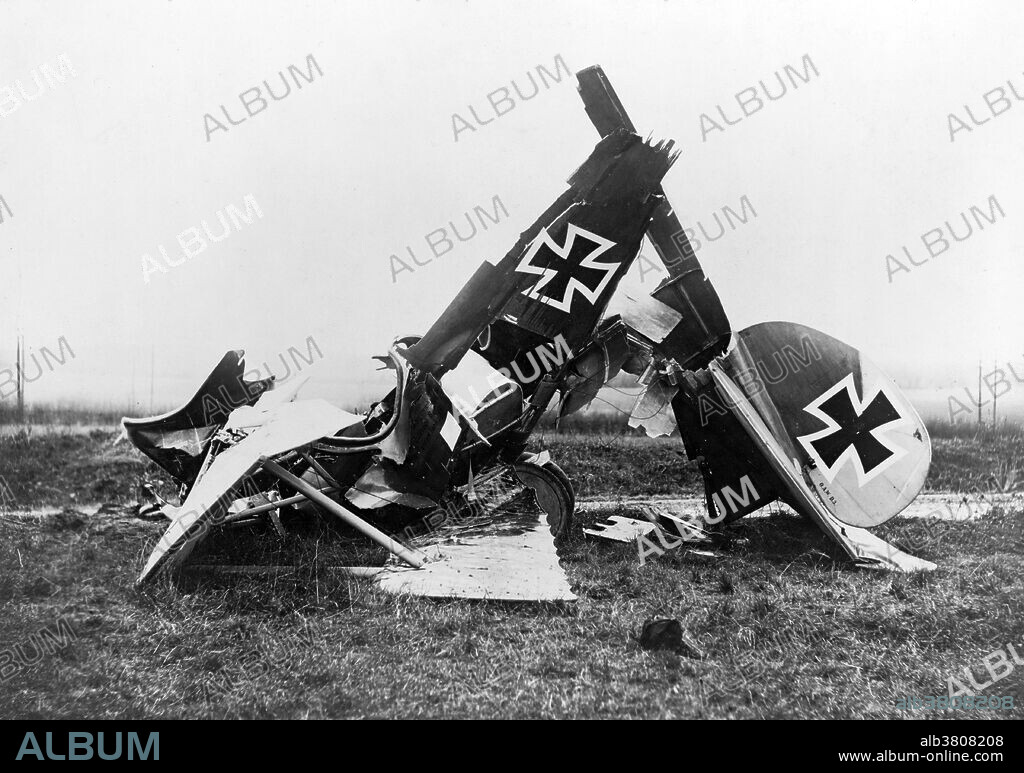alb3808208
WWI, Wreckage of German Fighter Plane

|
Add to another lightbox |
|
Add to another lightbox |



Title:
WWI, Wreckage of German Fighter Plane
Caption:
Wreckage of a German Albatross D. III fighter biplane. On rudder of plane: "O.A.W. D.3" for the manufacturer Ostdeutsche Albatros-Werke, airplane class D.3." Undated photograph circa 1917/18. The Albatros D.III was a biplane fighter aircraft used by the Imperial German Army Air Service (Luftstreitkräfte) and the Austro-Hungarian Air Service (Luftfahrtruppen) during WWI. The D.III was flown by many top German aces, including Manfred von Richthofen, Ernst Udet, Erich Löwenhardt, Kurt Wolff, and Karl Emil Schäfer. The D.III was considered pleasant and easy to fly, if somewhat heavy on the controls. The sesqui-plane arrangement offered improved climb, maneuverability, and downward visibility compared to the preceding D.II. Like most contemporary aircraft, the D.III was prone to spinning, but recovery was straightforward. Peak service was in November 1917, with 446 aircraft on the Western Front.
Credit:
Album / LOC/Science Source
Releases:
Model: No - Property: No
Rights questions?
Rights questions?
Image size:
4800 x 3374 px | 46.3 MB
Print size:
40.6 x 28.6 cm | 16.0 x 11.2 in (300 dpi)
Keywords:
1ST WORLD WAR • 20 XX TWENTIETH CENTURY • 20TH CENTURY • 20TH • AERONAUT • AERONAUTICAL • AERONAUTICS • AEROPLANE • AIRCRAFT • AIRPLANE • ALBATROSS D. 3 • AUSTRO-HUNGARIAN AIR SERVICE • AVIATION • BI-PLANE • BIPLANE • BW • CELEBRITY • CRASHED • DESTROYED • EVENT • FAMOUS • FIGHTER PLANE • FIRST WORLD WAR • GERMAN ALBATROSS D. III • GERMAN • GERMANS • GLOBAL WAR • GREAT WAR • HISTORIC • HISTORICAL • HISTORY • HUNDRED YEARS WAR • IMPERIAL GERMAN ARMY AIR SERVICE • IMPORTANT • LUFTFAHRTRUPPEN • LUFTSTREITKRäFTE • NOTABLE • PHOTO • PHOTOGRAPH • SESQUI-PLANE • SESQUIPLANE • SESQUIWING • TWENTIETH CENTURY • WAR • WARFARE • WELL-KNOWN • WORLD WAR I (1914-18) • WORLD WAR I • WORLD WAR ONE • WRECKAGE • WW1 • WWI
 Pinterest
Pinterest Twitter
Twitter Facebook
Facebook Copy link
Copy link Email
Email

